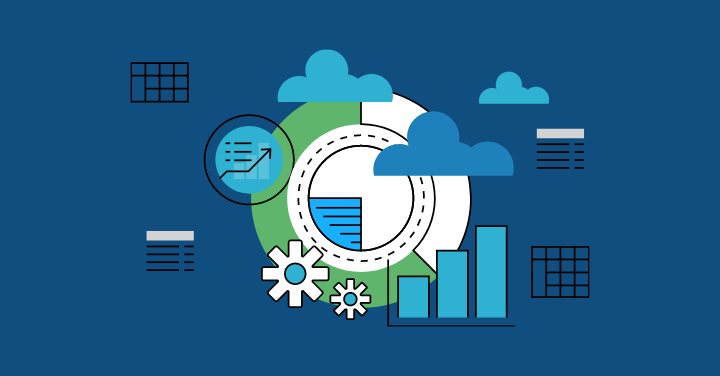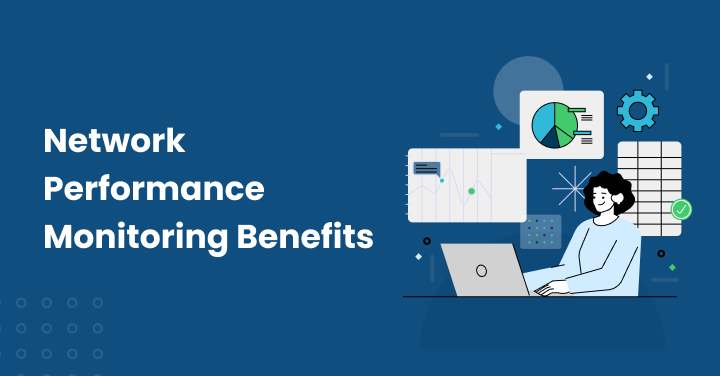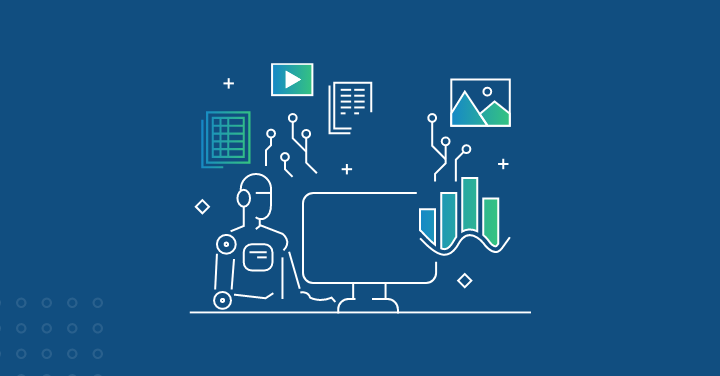Is your cloud infrastructure turning into a money pit? Despite the promise of scalability and cost-effectiveness, many businesses need help with efficient resource utilization, sluggish performance, and spiraling expenses in their cloud environments.
Applications grinding to a halt during peak business hours or receiving a monthly bill that makes your CFO break out in a cold sweat are not situations you want to be in.
Without proper monitoring and optimization, you’re unable to identify resource bottlenecks, security vulnerabilities, or cost leakages until it’s too late.
In this post, I’ll explain how to optimize your cloud infrastructure with real-time monitoring and provide actionable insights to enhance efficiency, reduce costs, and ensure optimal performance.
Let’s get started.
What Is Cloud Infrastructure?
Cloud infrastructure refers to the hardware and software components required to support cloud computing.
It provides the foundation for delivering services over the internet.
The key components of cloud infrastructure include:
- Servers: Physical or virtual machines that provide processing power
- Storage: Solutions for data storage, including block storage, object storage, and file storage
- Networking Resources: Components that facilitate communication between servers and clients, such as routers and switches
There are many types of cloud infrastructures, each offering distinct advantages and use cases depending on your needs, budget, and technical requirements.
Here are the three primary types:
1. Public Cloud: In this cloud model, third-party providers own and oversee the cloud infrastructure. This approach offers cost-effective and scalable resources, delivering flexibility to accommodate a diverse array of users and applications.
2. Private Cloud: A private cloud is exclusively dedicated to a single organization, providing enhanced security and control. It is often customized to fulfill specific business needs and compliance standards.
3. Hybrid Cloud: The hybrid cloud combines both public and private cloud infrastructures. This model helps organizations balance control and flexibility by keeping sensitive workloads on-premises while using the public cloud for scalable and varied services.
Each type has its pros and cons.
Public clouds offer scalability and cost-effectiveness, which is important if you want to scale your ecommerce business, but may have cloud security concerns.
Private clouds provide more control and security but can be more expensive. Hybrid clouds offer a balance but can be complex to manage.
Understanding your cloud environment is the first step toward optimization.
The more familiar you are with your entire cloud infrastructure, the better equipped you’ll be to implement effective optimization strategies.
The Importance of Real-Time Monitoring in Cloud Optimization
Real-time monitoring involves tracking and analyzing the performance and health of your cloud infrastructure as it happens.
This immediate insight is crucial because cloud environments are dynamic, with resource usage and application performance constantly fluctuating.
Without continuous cloud monitoring, critical issues that affect optimization can slip through the cracks.
Real-time data allows you to:
- Track performance metrics instantly
- Detect anomalies as they occur
- Reduce latency by addressing issues promptly
- Prevent costly downtime by identifying potential issues before they escalate
Cloud infrastructure with real-time monitoring lets you make quick, well-informed decisions that keep your cloud system running at its best all the time.
How to Optimize Your Cloud Infrastructure: Key Strategies
Optimizing your cloud infrastructure with real-time monitoring is an ongoing process that requires several different approaches.
The strategies below will help you maximize your cloud environment’s efficiency and performance.
1. Monitor Cloud Infrastructure Performance Metrics
Infrastructure monitoring metrics offer essential insights into the health, performance, and availability of various components within an IT infrastructure.
To optimize your cloud infrastructure with real-time monitoring, you need to keep a close eye on key performance metrics, such as:
- CPU usage: Indicates how hard your processors are working
- Memory usage: Shows how much RAM is being utilized
- Network performance: Measures the delay in data transfer
- Disk performance: Tracks read/write speeds and I/O operations
- Error rates: Identifies recurring issues in your applications or systems
Real-time monitoring of these variables enables you to spot bottlenecks, underutilized resources, or potential failures promptly.
For instance, consistently high CPU usage might indicate the need for more powerful instances or better load balancing.
Low memory availability could suggest a memory leak in your application.
These real-time insights allow you to make timely adjustments, ensuring optimal resource allocation and performance.
For businesses looking to scale their operations, these insights are particularly important in maintaining a smooth customer experience during periods of growth.
To enhance your cloud monitoring strategy, consider adopting an observability platform that integrates various data sources into a single pane of glass for visibility.
This approach allows for effective data collection and analysis across your systems.
2. Implement Auto-Scaling Based on Real-Time Data
Auto-scaling is a feature that automatically adjusts resources across different types of cloud computing services based on demand.
A cloud infrastructure with real-time monitoring can effectively optimize resource allocation.
To set up auto-scaling:
- Define scaling policies based on performance metrics (e.g., CPU utilization above 70%)
- Set minimum and maximum instance limits to control costs
- Use real-time database monitoring to trigger scaling actions
For example, if your monitoring tool detects a sudden spike in traffic, it can trigger the auto-scaling policy to launch additional instances, ensuring performance during peak times.
With advanced machine learning algorithms, the system can predict and prepare for demand fluctuations, ensuring optimal performance during peak times.
Conversely, unnecessary resources can be automatically de-provisioned when demand decreases to reduce costs.
When you base your auto-scaling on real-time data, you prevent both over-provisioning (which leads to unnecessary costs) and under-provisioning (which can result in poor performance or downtime).
This flexible method makes sure that your system can adapt to changing needs while making the best use of resources.
3. Centralize Monitoring of Cloud Infrastructure with Real-Time Monitoring Across Multi-Cloud Environments
Many organizations leverage multiple cloud providers, which makes finding the best cloud monitoring solution essential.
A single platform solution with ease of use helps avoid vendor lock-in while maximizing efficiency.
However, this can complicate application performance monitoring efforts.
Implementing a centralized monitoring system that pulls data from all your cloud environments is crucial for comprehensive optimization.
A unified monitoring dashboard allows you to:
- Compare performance across different cloud platforms
- Identify inefficiencies or redundancies between environments
- Make informed decisions about resource allocation across your entire network infrastructure
- Streamline troubleshooting with responsive customer support when needed
Centralizing your cloud infrastructure with real-time monitoring helps you gain a holistic view of your IT infrastructure.
This enables you to optimize resources across different services and providers easily.
4. Can Performance Dashboards Improve Your Cloud Infrastructure Visibility?
Real-time performance dashboards provide at-a-glance insights into your cloud infrastructure’s health and performance.
These dashboards should be customized to display the most critical metrics for your specific environment.
Key elements to include in your dashboard are:
- CPU utilization across all instances
- Memory usage trends
- Network throughput and latency
- Disk I/O performance
- Application response times
- Error rates and types
By visualizing these metrics, you can quickly spot trends, identify outliers, and make data-driven decisions to optimize your infrastructure.
For instance, a spike in disk I/O might prompt you to investigate potential database optimizations or consider upgrading to faster storage options.
5. Strengthen Security with Real-Time Threat Detection
Security is a critical aspect of optimizing your cloud infrastructure with real-time monitoring.
This approach is crucial for quickly identifying and mitigating cyber threats.
Implement real-time security monitoring by:
- Setting up alerts for unusual traffic patterns or access attempts
- Looking out for sudden spikes in resource usage that could indicate a DDoS attack
- Tracking user activities and access logs in real-time
- Implementing automated responses to common security events
Real-time server monitoring protects your infrastructure and helps you comply with regulatory requirements.
This is even more critical if you are handling sensitive customer data and for organizations implementing self-service portals, where customer information security is paramount.
By detecting and addressing security issues promptly, you minimize downtime and performance issues associated with security breaches.
6. Set Up Custom Alerts and Thresholds for Faster Incident Response
Effective incident response is crucial for maintaining an optimized cloud infrastructure.
Custom alerts based on real time data enable you to address issues before they impact performance or user experience.
When setting up alerts, use a cloud monitoring tool that can:
- Define thresholds based on historical performance data
- Create different severity levels for various types of alerts
- Ensure alerts are sent to the right team members via their preferred channels (email, SMS, Slack, etc.)
- Use advanced threat detection to identify unusual patterns that might not trigger threshold-based alerts
Too many alerts can lead to alert fatigue, while too few might cause you to miss critical issues.
Regularly review and refine your alert settings based on real incidents and false positives to maintain an effective incident response system.
7. Optimize Cloud Costs with Real-Time Usage Monitoring
In the real world, navigating cloud costs can quickly spiral out of control without proper application performance management.
Real-time usage monitoring allows you to identify cost savings opportunities as they arise.
To optimize costs:
- Monitor resource utilization in real-time to identify underused or idle resources
- Set up alerts for unusual spikes in usage or costs
- Use real-time data to right-size your instances based on actual usage patterns
- Identify opportunities for using spot or reserved instances to reduce costs
By continuously monitoring usage, you can make immediate adjustments to your infrastructure, ensuring you’re only paying for the resources you actually need.
Conclusion
Learning how to optimize your cloud infrastructure with real-time Monitoring is an ongoing process that requires vigilance and proactive management.
By implementing these best practices across your system, you gain the insights needed to make timely, data-driven decisions.
From performance optimization and cost control to enhanced security and incident response, real-time monitoring empowers you to maintain a lean, efficient, and high-performing cloud infrastructure.
Embrace these strategies to unlock the full potential of your cloud resources and drive your business forward.







